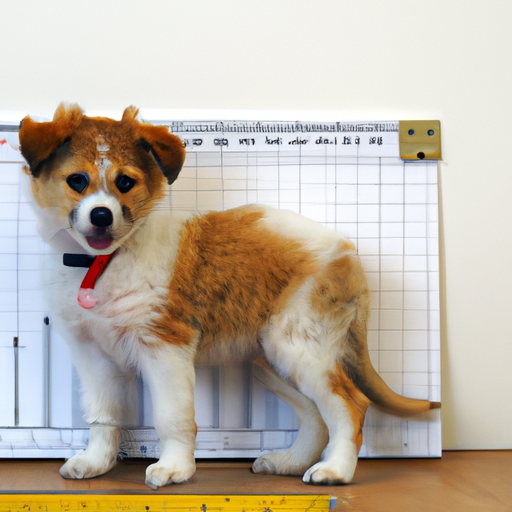Welcome, dear caregiver! You’ve just brought home a fluffy bundle of joy, and you’re already dreaming of the days when your pup will grow up and start thundering around your house. But, you might be wondering, “how big will my puppy get?” Well, you’re in the right place. Let’s embark on this journey of discovery together.
1. Understanding Puppy Growth
Puppies grow at a remarkable pace. They double their birth weight in the first week of their life! But growth isn’t just about size. It’s about bone structure, muscle development, and overall health. Remember, the size of your puppy as an adult depends on several factors:
- Breed
- Genetics
- Nutrition
- Health
2. Breed Matters
Different breeds grow at different rates and to different sizes. For instance, a Chihuahua will stay petite, while a Great Dane will grow into a giant. If you know the breed of your puppy, you can make a rough estimate of its adult size.
Here is a table showing the average adult weights of some common breeds:
| Breed | Average Adult Weight |
|---|---|
| Chihuahua | 2 – 6 lbs |
| Beagle | 20 – 25 lbs |
| Border Collie | 30 – 45 lbs |
| Labrador Retriever | 55 – 80 lbs |
| German Shepherd | 75 – 95 lbs |
| Great Dane | 110 – 175 lbs |
3. Genetic Factors
Just as in humans, genetics plays a significant role in determining the size of a dog. If you have access to the parents of your puppy, you can get a good idea of how big your puppy will get. Generally, male puppies will grow to be slightly larger than their mother, while female puppies will be a bit smaller.
4. Importance of Nutrition
Proper nutrition is key to your puppy’s growth. A well-balanced diet that is rich in protein, vitamins, and minerals will help your puppy reach its full growth potential. Overfeeding or underfeeding can lead to health problems and affect your puppy’s size.
5. Health Considerations
A puppy’s health can also impact its growth. Illnesses, parasites, and injuries can stunt growth, while regular vet check-ups and vaccinations can ensure your puppy grows up healthy and strong.
6. Predicting Your Puppy’s Size
There are various methods to predict your puppy’s adult size. One such method is the ‘double two’ rule. At two weeks old, double the weight of your puppy. Then, double it again at four months for a medium or large breed, or at three and a half months for a small breed. This should give you a rough estimate.
7. Is Size Important?
Size might be a factor in choosing a puppy, but remember, the size of a dog’s heart and personality is not measured in pounds or inches. No matter how big or small your puppy gets, it will undoubtedly fill your home with love and happiness.
8. FAQ
Q: Can the size of a puppy’s paws predict its adult size?
A: There’s a common belief that a puppy with big paws will grow into a big dog, but this isn’t always accurate. While it can give a hint, it’s not a reliable method.
Q: What if my puppy is a mix breed?
A: If your puppy is a mix, it can be trickier to predict its size. Look at the sizes of the known breeds in the mix for a rough estimate.
Q: Can neutering or spaying affect my puppy’s size?
A: Neutering or spaying can slightly affect a dog’s growth, as hormones play a role in bone growth. Dogs neutered early may be slightly taller.
Q: What if my puppy is smaller or bigger than expected?
A: Each puppy is unique, and these are rough estimates. As long as your puppy is healthy, there is no need to worry.
There you have it, dear caregiver! A comprehensive guide on “how big will my puppy get?” Remember, size doesn’t define the love, joy, and companionship a dog brings into our lives. Enjoy the journey of watching your puppy grow, and cherish every single moment.



